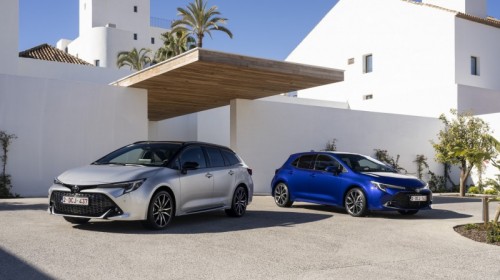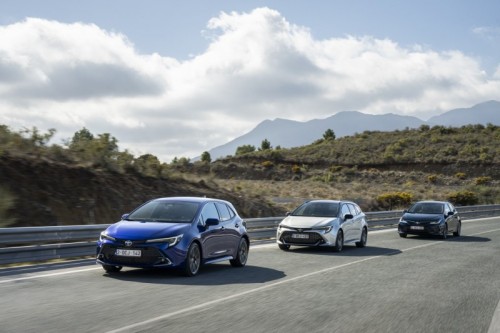
The New hybrid electric Toyota Corolla
The fifth generation of Toyota’s self-charging full hybrid electric technology is the heart of the new Corolla. Detailed engineering and design changes deliver a better driving experience, higher performance and improved efficiency. The changes include new power control unit and transaxle designs, a more powerful lithium-ion battery and calibration to achieve a more rewarding driving experience with a closer relationship between the driver’s use of the accelerator and the drive force delivery.
Performance
The new Corolla is available with 1.8 and 2.0-litre powertrains.
Total power from the 1.8-litre system is 140 DIN hp/103 kW, bringing a 1.8-second reduction in the 0-100 km/h time to 9.1 seconds. Despite this performance increase, CO2 emissions are lover by 2 g/km and equals 100 g/km. For the 2.0-litre system, total output has risen to 196 DIN hp/ 144kW and half a second has been shaved from the 0-100 km/h time, taking it down to 7.4 seconds. An impressive reduction of 12 g/km in the combined cycle CO2 figure , to 98 g/km.
Hybrid system design

In creating the fifth generation of its market-leading full hybrid electric technology, Toyota scrutinised all the system’s principal components to see how they could be reduced in both size and weight. This helped ensure that the increase in power output was not at the expense of efficiency or reliability.
A new power control unit (PCU) helps reduce the level of electrical losses in the system (-14% 1.8-litre, -6% 2.0-litre) and maintain fuel efficiency. The unit has a new double-sided cooling system and runs at a higher frequency, reducing its noise level.
The PCU is installed directly above a new transaxle featuring a compact, high-output motor-generator with new internals to improve fuel efficiency and dynamic performance. A new stator coil winding method has helped reduce the motor’s size. The complete transaxle is 15% lighter than before thanks to the use of new materials and which uses new, compact, high-output drive motors.
Using low-viscosity oil reduces internal friction and adds to the all-round improvement in efficiency. Other detailed measures include smaller gears with teeth reprofiled to give a larger contact area and a smaller and lighter differential.
Hybrid battery
The new lithium-ion hybrid battery is another example of how Toyota has succeeded in increasing performance from a unit that is smaller in size and weighs less than the one previously used in Corolla. The balance is impressive: weight has been reduced by 14% while power output has increased by 14%. The battery’s potential lifespan has been increased and its performance is quieter, thanks a to a new cooling system. And its compact dimensions allow it to be housed completely beneath the rear seats, so there’s no loss of space in the load compartment.
Information Source: Read More “
Energy Monitors , Electric Power , Natural Gas , Oil , Climate , Renewable , Wind , Transition , LPG , Solar , Electric , Biomass , Sustainability , Oil Price , Electric Vehicles,


